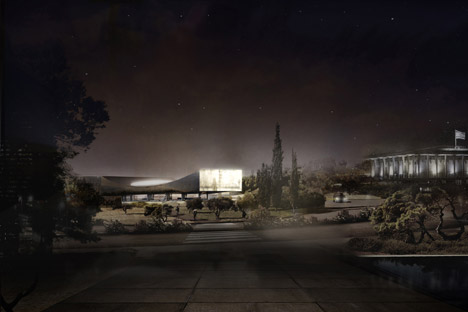Herzog & de Meuron unveils curving stone design for contentious Israel library
News: Herzog & de Meuron has revealed its design for the National Library of Israel, after being chosen to replace the Israeli architect who originally won the competition.
Herzog & de Meuron presents a "strong, sculptural" design for the new national library in Jerusalem – a project given to the Swiss firm after initial winner Rafi Segal was ousted from the job over a copyright dispute.

The 34,000-square-metre structure is being designed in collaboration with Israeli firm Mann Shinar Architects & Planners. It will comprise six storeys, four of which will be buried underground.
As well as housing a public library, the stone-clad building will include research laboratories and offices, educational facilities, a visitor centre, a multipurpose hall and a climate-controlled archive.

"Our project reflects the open and transparent ambitions of the National Library of Israel," said Herzog & de Meuron, which has recently completed a biologically filtered swimming pool in Switzerland and an open-air gymnasium in Brazil.
"The strong, sculptural form of the stone, related to the specific topography and context of the site, is elevated off the ground, and situated above vitrine like elements."
"The stone contains a large open space for the library's visitors and users to interact while the vitrines expose the collection, reading room and public functions to the street and adjacent surroundings," added the studio.

Construction is due to start in 2016 on the library, which will be located next door to the Israel Museum, the Science Museum and the Hebrew University.
David Bloomberg, chairman of the board of directors of the National Library, said the building will "become the leading institution in the country in collecting and preserving the treasures of the Jewish people in Israel and the Diaspora".
Herzog & de Meuron were appointed to the project in April 2013, just four months after Segal's dismissal following a challenge from of his former colleagues at the Harvard School of Design over his ownership of the first competition-winning design.